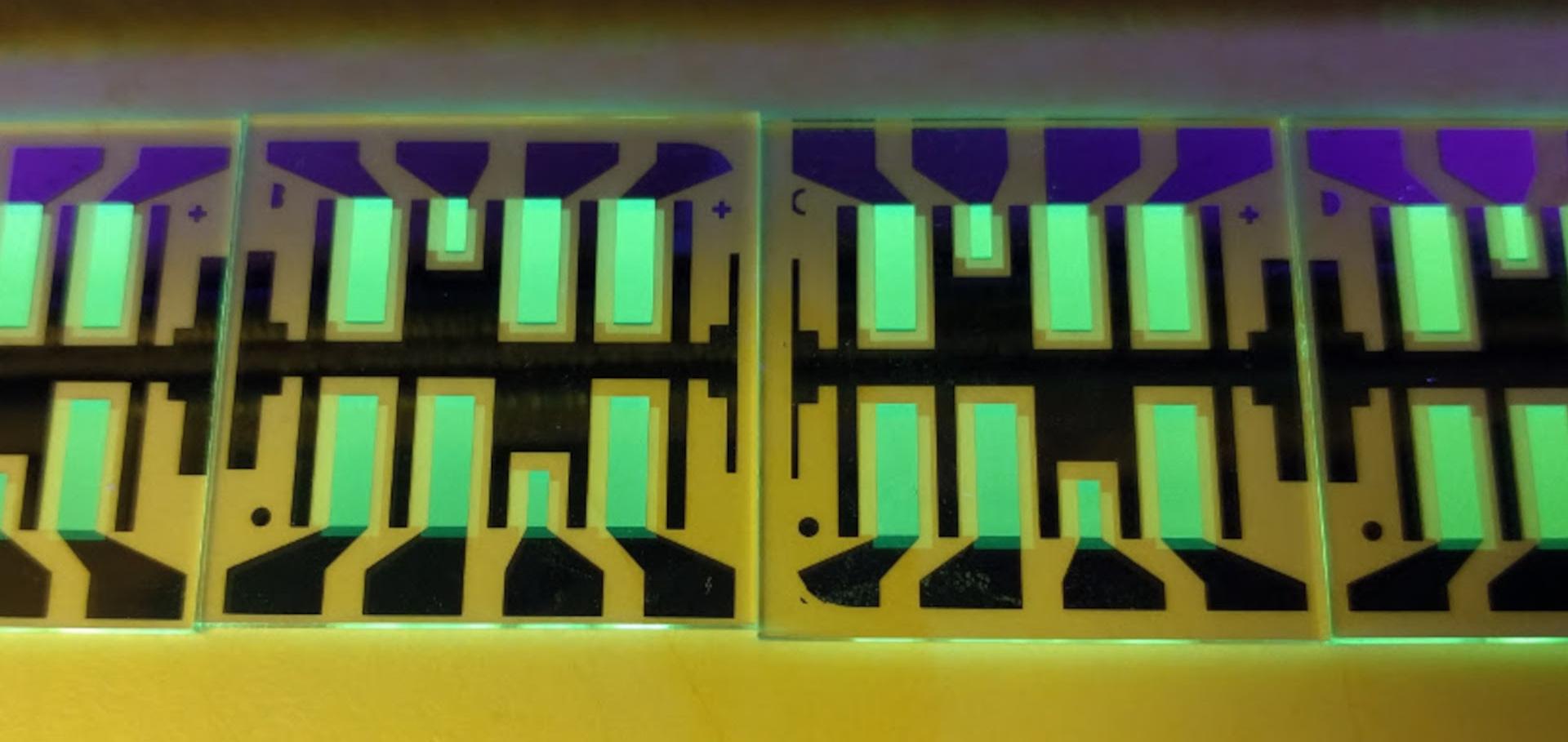Intrinsic non-radiative voltage losses in fullerene-based organic solar cells
Nature Energy Springer Nature 2:6 (2017) 17053
Abstract:
Organic solar cells demonstrate external quantum efficiencies and fill factors approaching those of conventional photovoltaic technologies. However, as compared with the optical gap of the absorber materials, their open-circuit voltage is much lower, largely due to the presence of significant non-radiative recombination. Here, we study a large data set of published and new material combinations and find that non-radiative voltage losses decrease with increasing charge-transfer-state energies. This observation is explained by considering non-radiative charge-transfer-state decay as electron transfer in the Marcus inverted regime, being facilitated by a common skeletal molecular vibrational mode. Our results suggest an intrinsic link between non-radiative voltage losses and electron-vibration coupling, indicating that these losses are unavoidable. Accordingly, the theoretical upper limit for the power conversion efficiency of single-junction organic solar cells would be reduced to about 25.5% and the optimal optical gap increases to 1.45–1.65 eV, that is, 0.2–0.3 eV higher than for technologies with minimized non-radiative voltage losses.Exciton diffusion length and charge extraction yield in organic bilayer solar cells.
Advanced Materials Wiley 29:12 (2017) 1604424
Abstract:
A method for resolving the diffusion length of excitons and the extraction yield of charge carriers is presented based on the performance of organic bilayer solar cells and careful modeling. The technique uses a simultaneous variation of the absorber thickness and the excitation wavelength. Rigorously differing solar cell structures as well as independent photoluminescence quenching measurements give consistent results.Dicyanovinylene-Substituted Oligothiophenes for Organic Solar Cells
Chapter in Elementary Processes in Organic Photovoltaics, Springer Nature 272 (2017) 51-75
Managing BHJ microstructural evolution for long-term photoconversion efficiency (Conference Presentation)
Proceedings of SPIE--the International Society for Optical Engineering SPIE, the international society for optics and photonics (2016) 99420y-99420y-1
Cross-linkable Fullerene Derivatives for Solution-processed n–i-p Perovskite Solar Cells
ACS Energy Letters American Chemical Society 1:4 (2016) 648-653


